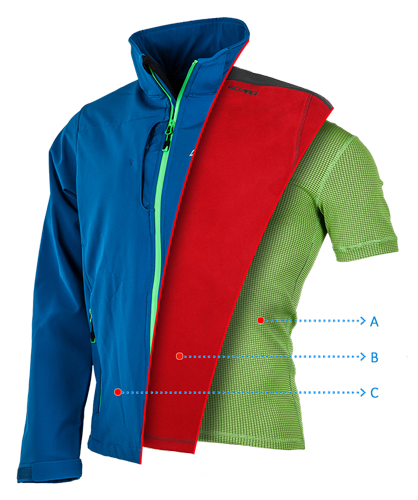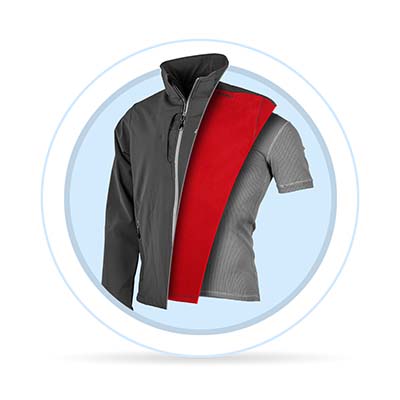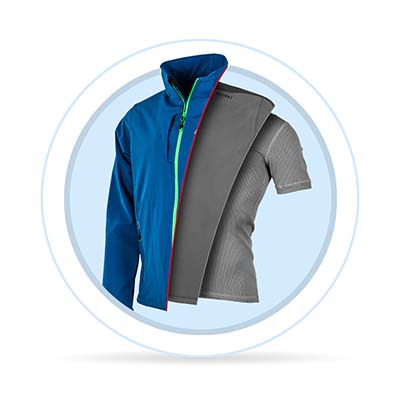How Layering Works
During any physical activity, the body produces energy in the form of heat (the more intense the activity, the more heat is produced) which activates perspiration as a cooling mechanism in order to prevent the body from overheating. Heat and sweat are produced with varying intensity in different parts of the body and differ for each individual. Technical (also known as functional) clothing is designed to maintain the natural microclimate of the body as much as possible, in other words to feel comfortable without feeling too hot or too cold. This is achieved through layering of suitable materials depending on the exercise or activity in question. Different clothing is needed for cycling, different for skiing or playing indoor tennis.
Layering of clothes is also known as the onion layering system of clothing. The system is based on different properties of various technical materials, and emphasizes their proper combinations. Every layer has its specific function, and if one layer isn’t used, the whole system breaks down.

We usually refer to a system of three layers, however the quantity can change as needed depending on the weather conditions.
- A - First layer - wicking, absorbing (thermal garment) layer is a basic building stone which wicks the perspiration away from the skin and thus keeps it relatively dry. The basic feature of the first layer is the transport of the perspiration into another layer and ventilation.
- B - Second layer - insulating layer (fleece and technical sweatshirts) keeps the body warm and helps in transporting the perspiration to the surface.
- Second and third layer - a recent category with characteristic softshell material
- C - Third layer - protective layer (membrane jackets and pants) protects from external elements (water, wind, cold) and at the same time enables the transport of the perspiration to the surface.



